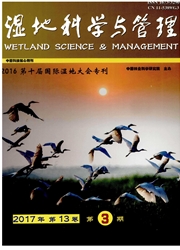

 中文摘要:
中文摘要:
通过对厦门市1989年、1993年、1997年TM遥感影像和2003年ETM^+遥感影像的解译分析统计,用单一土地利用动态度、转移矩阵等对1989-2003年厦门市湿地动态变化进行了分析,并进行了主要驱动力分析。结果表明:1989-2003年间,由于经济发展、人口增长以及农业生产比较利益的驱动和农业内部结构调整的影响,水库水塘、养殖、滩涂等湿地类型被非湿地侵占;养殖面积从1989年的4230hm^2持续增加到2003年的9768hm^2,主要是通过占用非湿地、滩涂、盐田和水库水塘增加的;红树林面积大幅度减少,从1989年的84hm^2持续减少到2003年的17hm^2,主要是由于养殖、非湿地的侵占以及遭受破坏变为滩涂。
 英文摘要:
英文摘要:
Through interpretation, analysis and statistics of three temporal TM remote sensing images respectively taken in 1989, 1993 and 1997 and ETM^- remote sensing image taken in 2003, the dynamic changes of the wetland in Xiamen from 1989 to 2003 were analyzed using the single land-use dynamic index and the transfer matrix to determine the main driving forces of the changes. The results indicated: in the past 14 years, driven by economic development, population growth and the comparative benefit of agricultural production and due to the impacts of internal restructuring of agriculture, a lot of wetlands such as reservoirs and pools, aquaculture, mud flat were transformed to non-wetland; the increase of aquaculture area from 4 230 hm^2 in 1989 to 9,768 hm^2 in 2003 was mainly through impropriating non-wetland, mud flat, the salt fields and reservoirs and pools; The area of mangrove forests was reduced sharply from 84 hm^2 in 1989 to 17 hm^2 in 2003, mainly transformed to aquaculture, non-wetland and mud flat due to human destruction.
 同期刊论文项目
同期刊论文项目
 同项目期刊论文
同项目期刊论文
 期刊信息
期刊信息
